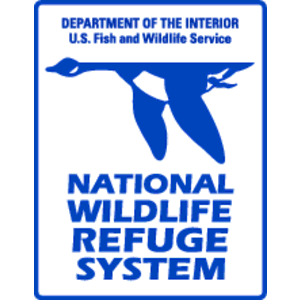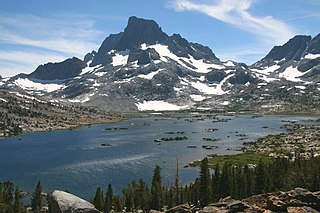 W
WThe protected areas of the United States are managed by an array of different federal, state, tribal and local level authorities and receive widely varying levels of protection. Some areas are managed as wilderness, while others are operated with acceptable commercial exploitation. As of 2020, the 36,283 protected areas covered 1,118,917 km2 (432,016 sq mi), or 12 percent of the land area of the United States. This is also one-tenth of the protected land area of the world. The U.S. also had a total of 787 National Marine Protected Areas, covering an additional 3,210,908 km2 (1,239,739 sq mi), or 37 percent of the total marine area of the United States.
 W
WAreas of Critical Environmental Concern (ACEC) is a conservation ecology program in the Western United States, managed by the Bureau of Land Management (BLM). The ACEC program was conceived in the 1976 Federal Lands Policy and Management Act (FLPMA), which established the first conservation ecology mandate for the BLM. The FLPMA mandate directs the BLM to protect important riparian corridors, threatened and endangered species habitats, cultural and archeological resources, as well as unique scenic landscapes that the agency assesses as in need of special management attention.
 W
WThe BWCA Wilderness Act of 1978 created the Boundary Waters Canoe Area Wilderness, which was previously known as the Boundary Waters Canoe Area. The bill was introduced in October 1975 by United States Congressman Jim Oberstar and was a source of major controversy and debate. Topics of major concern were logging, mining, the use of snowmobiles and motorboats. After much debate, the Act was signed into law by President Jimmy Carter on October 21, 1978.
 W
WThe Eastern Wilderness Areas Act was signed into law by President Gerald Ford on January 3, 1975. The Act designated 16 new wilderness areas in the Eastern United States, including 207,000 acres (84,000 ha) of wilderness on national lands in 13 states. Although it was originally untitled, the bill signed by Ford has come to be known as the Eastern Wilderness Areas Act.
 W
WNational Forest is a classification of protected and managed federal lands in the United States. National Forests are largely forest and woodland areas owned collectively by the American people through the federal government, and managed by the United States Forest Service, a division of the United States Department of Agriculture. The National Forest Service is also a forestry research organization who provides financial assistance to state and local forestry industry.
 W
WThe Ice Age Floods National Geologic Trail or Ice Age Floods Trail is designated as the first National Geologic Trail in the United States. It will consist of a network of routes connecting facilities that will provide interpretation of the geological consequences of the Glacial Lake Missoula floods of the last glacial period that began about 110,000 years ago.
 W
WA U.S. National Marine Sanctuary is a zone within United States waters where the marine environment enjoys special protection. The program began in 1972 in response to public concern about the plight of marine ecosystems.
 W
WNational Conservation Area is a designation for certain protected areas in the United States. They are nature conservation areas managed by the Bureau of Land Management (BLM) under the National Landscape Conservation System.
 W
WNational Conservation Lands, formally known as the National Landscape Conservation System, is a 35-million-acre (140,000 km2) collection of lands in 873 federally recognized areas considered to be the crown jewels of the American West. These lands represent 10% of the 258 million acres (1,040,000 km2) managed by the Bureau of Land Management (BLM). The BLM is the largest federal public land manager and is responsible for over 40% of all the federal public land in the nation. The other major federal public land managers include the US Forest Service (USFS), National Park Service (NPS), and the US Fish and Wildlife Service (USFWS).
 W
WThe National Estuarine Research Reserve System is a network of 29 protected areas established by partnerships between the National Oceanic and Atmospheric Administration (NOAA) and coastal states. The reserves represent different biogeographic regions of the United States. The National Estuarine Research Reserve System protects more than 1.3 million acres of coastal and estuarine habitats for long-term research, water-quality monitoring, education, and coastal stewardship.
 W
WIn the United States, a national monument is a protected area that is similar to a national park, but can be created from any land owned or controlled by the federal government by proclamation of the President of the United States.
 W
WThe National Natural Landmarks (NNL) Program recognizes and encourages the conservation of outstanding examples of the natural history of the United States. It is the only national natural areas program that identifies and recognizes the best examples of biological and geological features in both public and private ownership. The program was established on May 18, 1962, by United States Secretary of the Interior Stewart Udall.
 W
WThe United States has 62 protected areas known as national parks that are operated by the National Park Service, an agency of the Department of the Interior. National parks must be established by an act of the United States Congress. A bill creating the first national park, Yellowstone, was signed into law by President Ulysses S. Grant in 1872, followed by Mackinac National Park in 1875, and then Rock Creek Park, Sequoia and Yosemite in 1890. The Organic Act of 1916 created the National Park Service "to conserve the scenery and the natural and historic objects and wildlife therein, and to provide for the enjoyment of the same in such manner and by such means as will leave them unimpaired for the enjoyment of future generations." Many current national parks had been previously protected as national monuments by the president under the Antiquities Act before being upgraded by Congress. Seven national parks are paired with a national preserve, areas with different levels of protection that are administered together but considered separate units and whose areas are not included in the figures below. Criteria for the selection of national parks include natural beauty, unique geological features, unusual ecosystems, and recreational opportunities. National monuments, on the other hand, are frequently chosen for their historical or archaeological significance. Fourteen national parks are designated UNESCO World Heritage Sites (WHS), while 21 national parks are designated UNESCO Biosphere Reserves (BR). Eight national parks are designated in both UNESCO programs.
 W
WThe National Wild and Scenic Rivers System was created by the Wild and Scenic Rivers Act of 1968, enacted by the U.S. Congress to preserve certain rivers with outstanding natural, cultural, and recreational values in a free-flowing condition for the enjoyment of present and future generations.
 W
WNational Wildlife Refuge System is a designation for certain protected areas of the United States managed by the United States Fish and Wildlife Service. The National Wildlife Refuge System is the system of public lands and waters set aside to conserve America's fish, wildlife, and plants. Since President Theodore Roosevelt designated Florida's Pelican Island National Wildlife Refuge as the first wildlife refuge in 1903, the system has grown to over 568 national wildlife refuges and 38 wetland management districts encompassing more than 150,000,000 acres (607,028 km2).
 W
WThe New England Wilderness Act of 2006 was signed into law by President George W. Bush on December 1, 2006. The Act designated three (3) new wilderness areas in the U.S. states of New Hampshire and Vermont, while expanding five (5) existing wilderness areas across these two states. A total of 76,152 acres (30,818 ha) of new wilderness were created, in the White Mountain National Forest and the Green Mountain National Forest. The Act also created a new recreation area in Vermont.
 W
WAn Outstanding Natural Area is a protected area designation in the United States. The designations are managed by the Bureau of Land Management within the National Landscape Conservation System. The following table contains a partial list of outstanding natural areas, three of which protect lighthouses and the adjacent land.
 W
WA Primitive Area is a land designation previously used by the United States Forest Service. Although there are still lands with this title, most are now known as wilderness areas. The Forest Service began this new designation in 1929 with the L-20 regulations.
 W
WA National Recreation Area (NRA) is a designation for a protected area in the United States.
 W
WResearch Natural Area is a designation for certain protected areas in the United States.
 W
WThe National System of Marine Protected Areas of the United States is a national initiative designed to strengthen the protection of U.S. ocean, coastal, and Great Lakes resources through the coordination of existing marine protected areas (MPAs). The national system of MPAs consists of the group of MPA sites, networks, and systems established and managed by federal, state, territorial, tribal and/or local governments that collectively enhance conservation of the nation's marine heritage and represent its diverse ecosystems and resources. Although managed independently, national system MPAs work together at the regional and national levels to achieve common objectives for conserving the nation's important natural and cultural resources. The national system does not bring state, territorial or local sites under federal authority, nor does it restrict or change the management of any MPA.
 W
WThe Vermont Wilderness Act of 1984 was signed into law by President Ronald Reagan on June 19, 1984. The Act designated four (4) new wilderness areas in the U.S. state of Vermont, while expanding one (1) existing wilderness area. A total of 41,260 acres (16,700 ha) of new wilderness were created, all in the Green Mountain National Forest. The Act also created a new recreation area in Vermont.
 W
WThe Wilderness Act of 1964 was written by Howard Zahniser of The Wilderness Society. It created the legal definition of wilderness in the United States, and protected 9.1 million acres (37,000 km²) of federal land. The result of a long effort to protect federal wilderness and to create a formal mechanism for designating wilderness, the Wilderness Act was signed into law by President Lyndon B. Johnson on September 3, 1964 after over sixty drafts and eight years of work.
 W
WThe National Wilderness Preservation System (NWPS) of the United States protects federally managed wilderness areas designated for preservation in their natural condition. Activity on formally designated wilderness areas is coordinated by the National Wilderness Preservation System. Wilderness areas are managed by four federal land management agencies: the National Park Service, the U.S. Forest Service, the U.S. Fish and Wildlife Service, and the Bureau of Land Management. The term "wilderness" is defined as "an area where the earth and community of life are untrammeled by man, where man himself is a visitor who does not remain" and "an area of undeveloped Federal land retaining its primeval character and influence, without permanent improvements or human habitation, which is protected and managed so as to preserve its natural conditions." As of 2016, there are 803 designated wilderness areas, totaling 111,368,221 acres (45,069,120 ha), or about 4.5% of the area of the United States.
 W
WA wilderness study area (WSA) contains undeveloped United States federal land retaining its primeval character and influence, without permanent improvements or human habitation, and managed to preserve its natural conditions. WSAs are not included in the National Wilderness Preservation System until the United States Congress passes wilderness legislation.